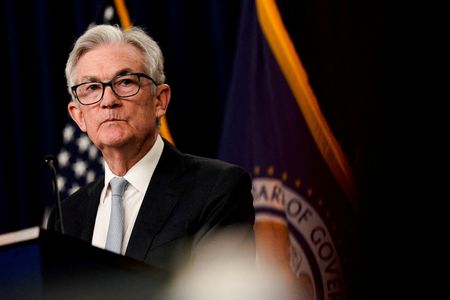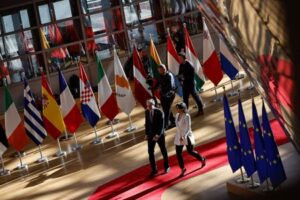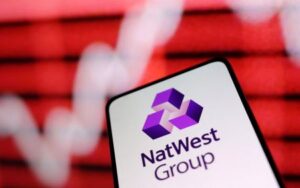By Howard Schneider and Ann Saphir
(Reuters) – Federal Reserve Chair Jerome Powell on Wednesday said it was time to slow the pace of coming interest rate hikes while also signaling a protracted economic adjustment to a world where borrowing costs will remain high, inflation comes down slowly and the United States remains chronically short of workers.
In an hour-long session of prepared remarks and questions at the Brookings Institution think tank – his last scheduled appearance before the central bank’s next meeting in two weeks – Powell gave a short-term message that sent markets soaring: The Fed was “slowing down” from the breakneck pace of three-quarter percentage point rate hikes that have prevailed since June, and would feel the way towards the peak interest rate needed to slow inflation to the Fed’s 2% target.
But he also outlined longer-term shifts that may be underway – in the supply of labor in particular – that could presage a long period of elevated interest rates and inflation that responds only slowly to the Fed’s restrictive policy. At the same time, he rejected the idea that the central bank was so intent on calming the highest inflation in 40 years that policymakers would “crash” the economy in that effort, insisting that a “soft or softish” landing remained possible, with inflation easing without a dramatic rise in unemployment.
“We wouldn’t…try to crash the economy and then clean up afterward,” Powell said, with policymakers hoping not to “overtighten…because we think that cutting rates is not something we want to do soon. That’s why we’re slowing down and going to try to find our way to what that right level is” that lowers inflation over time.
Combined the remarks showed the Fed grappling with some of the longer-term trends that were amplified by the pandemic, particularly the demographic drag that an aging population, COVID-era retirements, and weak immigration are having on the labor force.
Those won’t reverse soon, Powell said, acknowledging that a tight labor market will have to be brought into balance mostly by Fed actions that lower the demand for workers – either through a drop in job vacancies or, as some fear, a rise in unemployment.
“I think for now we have to assume,” that labor supply won’t rebound, Powell said. “We have to do what it takes to restore balance in the labor market to get back to 2% inflation…really just by slowing job growth rather than putting people out of work.”
Those sorts of structural concerns have been in the background of Fed debate since the early days of the pandemic, but are moving to the fore.
Concerns about global supply chains, for example, were considered fleeting at first, likely to pass and help fix high inflation as they did.
But progress has been slower than expected, with China in particular now undergoing successive lockdowns that have made it a less secure source of goods, and U.S. labor force participation still depressed.
‘LONG WAY TO GO’
Powell’s remarks about a coming downshift in the pace of rate increases ignited a robust rally in equity and bond markets, which have taken a pounding this year on the back of the Fed’s aggressive rate hikes.
The benchmark S&P 500 index shot into positive territory and closed 3.09% higher, and bond yields, which move in the opposite direction to their prices, all tumbled. The yield on the 2-year Treasury note, the maturity most sensitive to Fed rate expectations, dropped to about 4.37% from 4.52%. The dollar weakened against a basket of major trading partners’ currencies.
In rate futures markets, traders added to the prevailing bets that the Fed would slow its pace of rate hikes at its meeting in two weeks.
“You can’t keep raising rates as quickly as they were doing it,” said Rick Meckler at Cherry Lane Investments in New Vernon, New Jersey. “That said, investors always like the comfort of hearing it directly from the (Fed) chair.”
Still, and despite the coming slowdown in the pace of rate increases, Powell said it remained an open question “how much further we will need to raise rates to control inflation, and the length of time it will be necessary to hold policy at a restrictive level.”
While the Fed chief did not indicate his estimated “terminal rate,” Powell said it is likely to be “somewhat higher” than the 4.6% indicated by policymakers in their September projections. He said curing inflation “will require holding policy at a restrictive level for some time,” a comment that leaned against market expectations the U.S. central bank could begin cutting rates next year as the economy slows.
The central bank meets again on Dec. 13-14. Along with approving an expected half-point rate increase policymakers will issue new projections for rates, economic growth, inflation and unemployment in coming years.
With the coming half-percentage-point increase the central bank will have lifted its overnight policy rate from near zero as of March to the 4.25%-4.50% range, the swiftest change in rates since former Fed Chair Paul Volcker was battling an even worse rise in prices.
That has not, however, had a convincing impact yet on inflation. Powell said Fed estimates of inflation in October showed its preferred measure still rising at about triple the central bank’s 2% target.
He noted that while goods inflation has been easing, the cost of housing is likely to continue to rise into next year, while key price measures for services remain high and the labor market tight. Data released earlier on Wednesday showed there were still about 1.7 job openings for each unemployed person.
“Despite some promising developments, we have a long way to go in restoring price stability,” Powell said. “We will stay the course until the job is done.”
(Reporting by Howard Schneider; Additional reporting by Caroline Valetkevitch; Editing by Paul Simao and Andrea Ricci)





